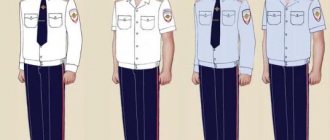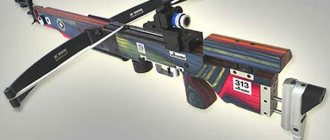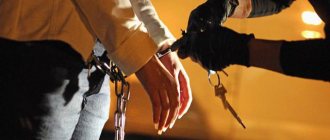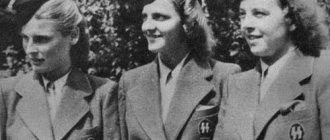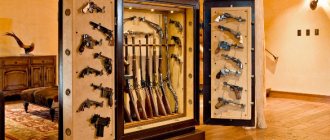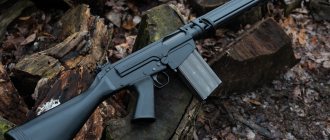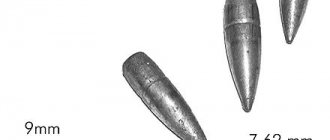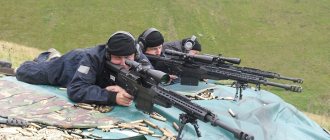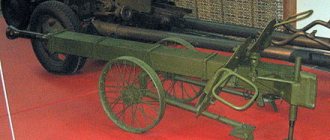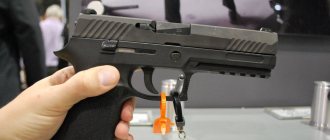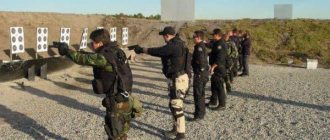It is difficult to find a person who does not know what shoulder straps are. These are insignia that are used in government and military structures, for example, many have seen the shoulder straps of a police lieutenant, but not everyone understands their differences.
Those who have served in the army will easily be able to distinguish a major from a lieutenant colonel. But for most, the stars on epaulets mean absolutely nothing. Let's talk about shoulder straps and their features depending on the rank of the policeman and the rank he holds.
How to properly attach stars
Shoulder insignia among military personnel are an integral attribute of a serviceman's appearance in the army, as well as in law enforcement agencies.
These signs will not only help to distinguish a particular employee by rank, but also determine which specific department he belongs to. Rank is distinguished, as a rule, by the size of the stars, their number on the shoulder strap, and also by their location on this part of the serviceman’s clothing. For citizens who decide to give their lives to service, it is necessary to know how to properly attach stars to shoulder straps.
All rules regarding this issue are provided for by special Regulations, which were drawn up and approved by the Ministry of Defense of our country, as well as in accordance with the order of the Ministry of Internal Affairs. All norms must be observed by both future military personnel and those already occupying certain positions.
Interesting information about officers and warrant officers
Let’s immediately talk about one interesting point. In Russia, all officer epaulets of the military, as well as the police, are the same. Here we are talking about the size of the stars, as well as their location. By the way, this also applies to warrant officers. The colors will naturally differ here.
To find out what rank an internal affairs officer has, you will need to take a closer look at the size of his stars, count their number, and also pay attention to how they are located.
All parameters on shoulder straps are strictly regulated by the relevant order. This means that if a violation occurs, the perpetrator will face disciplinary action.
Types of shoulder straps in the Russian police
Imagine you are driving along the road in a car and an inspector stops you. How to contact him if he hasn’t introduced himself? You can simply say “comrade policeman,” but it’s much better, of course, by rank. The same applies to situations on the street if you are walking. In general, knowing your ranks and shoulder straps is a must. Moreover, they changed a little in appearance after the police were renamed the police.
Police uniforms of the Russian Empire of the 19th-20th centuries
For a long time, the key differences between the commanders of the pre-Petrine Russian army were the cut of clothing and the type of weapons. The first modernization was carried out by Peter the Great - breastplates with heraldry appeared. Headdresses also played an important role.
By the beginning of the 19th century, uniforms of a more modern design began to be introduced. Epaulettes were added to them, which are in many ways considered a prototype of shoulder straps. At first, officer's epaulettes were the same color as the uniform; general's epaulettes were made with golden shades. In the early 20s In the 19th century, the first stars and stripes for junior and senior officers appeared in military uniforms.
The first shoulder straps of modern designs appeared in the second half of the 19th century along with the overcoat. As special insignia, stars and braid were sewn onto them. The 1917 revolution abolished such military attributes, considering them a symbol of the monarchy. Later, the attitude towards them was revised, and they began to return to their uniforms.
Shoulder straps appeared in the police and gendarmerie at about the same time as in the army. The similarities of some aspects of service and ranks were largely determined by the borrowing of insignia. Common points still exist.
Police shoulder straps
Police ranks in Russia differ according to the same principles as in the army. There are junior, middle, senior and senior officers. The first group includes sergeants, foremen and warrant officers.
Taking into account certain nuances, the question of what rank for two stars on uniform does not have a clear answer. It is necessary to distinguish between sizes, their location, and the number of gaps.
Shoulder straps of privates
The rank of private was introduced into the Ministry of Internal Affairs along with the police. Before this, a junior law enforcement officer was called a policeman. A police private has only a button and an emblem on his shoulder straps. Cadets have a capital "K".
Sergeants
Sergeants are low-ranking junior officers. Instead of stars, there are transverse and longitudinal stripes. The distance from the edge to the first is 45 mm. The number of stripes depends on the rank - two, three and one wide for a junior sergeant, sergeant and senior sergeant, respectively. The foreman has one wide longitudinal stripe.
We suggest you read Do you need an agreement with a realtor when selling an apartment?
Ensign
The warrant officer and senior warrant officer of the police each have two and three small stars. They are located longitudinally (vertically) in the center.
The junior lieutenant has one star at a distance of 45 mm from the edge of the shoulder strap. The lieutenant has two, located transversely (horizontally) at a distance of 25 mm from the edge. The eldest has three stars in the form of a triangle.
The captain wears four stars - two transverse and two longitudinal in the middle. All shoulder straps of lieutenants and captains have a gap in the form of a vertical stripe in the center.
Senior commanders have the following shoulder straps:
- major - one star;
- lieutenant colonel - two transverse;
- colonel - three stars arranged in a triangle.
The shoulder straps of the highest command personnel of the Russian Federation have the following differences:
- for a major general, one star is located 45 mm from the edge;
- Lieutenant General - two, located longitudinally (vertically);
- Colonel General - three stars are placed vertically.
The size of the stars is 22, instead of gaps there is a pattern. The general originally had 4 longitudinally located stars. Currently they have been replaced by one larger one, 40 mm.
Special ranks: description
First, let's understand the terminology. Titles that are assigned to employees in law enforcement agencies for their length of service, as well as taking into account merit, professionalism, experience and achievements - these are special ranks.
Law enforcement agencies are characterized by a single large ranking, but in individual structures laws establish their own procedures.
The procedure for assigning special ranks in the police, the conditions, sequence and terms are established by regulatory legal acts: Federal Laws “On Service in the Internal Affairs Bodies of the Russian Federation...” No. 342-FZ and “On the Police” No. 3-FZ.
The fundamental criteria for awarding titles are the position held and length of service.
Distance between stars on shoulder straps
In the officer corps, both senior, junior and middle, the distance at which stars are placed on shoulder straps is almost the same. The only difference is the size and location on the shoulder straps.
In accordance with the rank, a serviceman must take into account such features, which are as follows:
- A serviceman with the rank of warrant officer or midshipman wears two stars, which are located along the red line of the shoulder straps. Each star is 1.3 cm, and the distance between them must be at least 2.5 cm.
- A serviceman who has received the rank of senior warrant officer or senior midshipman has one more star, that is, on his shoulder straps the number already reaches three. In this case, they should be located as follows: all three stars are attached on the same line, along the red central one. The distance and size are similar to the previous point.
- A serviceman with the rank of junior lieutenant wears one star, which is identical in size to the ensign's stars, but the distance is significantly greater than -4.5 cm. The star should be located on the red line of the shoulder strap.
- A soldier promoted to the rank of lieutenant has two stars, which are no different in size from the stars of a junior lieutenant. The distance between the stars on the shoulder straps is the same as for ensigns - 2.5 cm. They are located on both sides of the red center line of the shoulder straps.
- A serviceman with the rank of senior lieutenant already receives three stars, which are the same size as on the shoulder straps of a serviceman one step lower. The distance of the stars on the shoulder straps is similar, that is, 1.3 cm. Two stars are located on both sides of the red center line, and the third is slightly higher and is located directly on the red line itself.
- A serviceman at the rank of capital and lieutenant commander already has four stars, which also have the same size and similar distance as the senior lieutenant. The location is as follows: two stars on either side of the red line, just above two stars at the same distance.
- A serviceman with the rank of major or captain 3rd rank has one star, which is larger in diameter than those who have the rank of captain or lieutenant. The size of the star in this case is 2 cm. The distance of the stars on the shoulder straps is 4.5 cm. The star is located between two red parallel lines on the shoulder straps.
- A serviceman with the rank of lieutenant colonel or captain 2nd rank already has two stars of the same size and at the same distance as the major. Both stars are located on the red lines of the shoulder straps.
- A serviceman who has received the rank of colonel or captain 1st rank has three stars on his shoulder straps, which are also 2 cm in size, and the distance between the stars on the shoulder straps of the RF Armed Forces in this case is 4.5 cm. Two stars are located on the red lines of the shoulder straps, and one slightly above and in the middle between these lines. Moreover, strictly at the same distance from the edges of the shoulder element.
- The location of the stars on the shoulder straps of military personnel who have received the rank of major general or rear admiral is indicated on the center line of the shoulder straps. In this case, the distance increases to 5 cm, and the diameter of the star is already 2.2 cm. Military personnel who have received this rank have one star.
- A serviceman with the rank of lieutenant general or vice admiral has two stars located at the same distance as the major general, and their size is also identical. The stars are located on the center line.
- Military personnel with the rank of colonel general already have three stars, which are in one row on the shoulder strap, at the same distance, equal to 5 cm, and having the same diameter, that is, 2.2 cm. All stars are also located on the center line of the shoulder straps.
- A soldier who has received the highest rank in the hierarchy currently established by the government of our country, that is, army general, police general or navy admiral, has one star, which reaches 4 cm in diameter.
We invite you to familiarize yourself with Increasing the authorized capital in 2020: step-by-step instructions
The placement of stars on officers' shoulder straps is strictly prescribed by regulations, from which one cannot deviate. Moreover, the distance between the stars for each rank in this case is the same and is 2.5 cm.
Standard indicators have been preserved since the times of the USSR
The location of the stars on the shoulder straps is of key importance in recognition. Therefore, their sizes, as well as the distances between them (all values are presented in millimeters) are strictly regulated:
- diameter of stars - 13, 20, 22 and 40;
- the distance between the stars on the shoulder straps is 25.
You should also consider the distance from the edge to the sprocket:
- Colonel General and Lieutenant General - 25;
- ensign, lieutenant, captain, lieutenant colonel and colonel - 30;
- junior lieutenant and major - 45;
- major general - 50.
For junior officers, the distance from the edge to the stripes is 45. The distance between the button and the emblem should be 5 millimeters. The last rule applies to all ranks.
Basic rules for star placement
The basic principles of placing stars are by seniority (the higher the rank, the more insignia) and their different locations depending on the number and location of the stripes. The diameter increases from junior to senior positions. The gap between the edge of the shoulder straps and the center of the star depends on their number and size and can be 25 or 50 mm. The first option applies:
- for the captain;
- Lieutenant General;
- Colonel General;
- ensign.
The second option is typical for the ranks of junior lieutenant and major general. The distance between several stars located along the entire length of the epaulette does not change, regardless of rank and service. It is always 25 mm.
Contrary to popular belief, stars are not only made of metal. In some cases, they are also made from plastisol. The shape and diameter do not change.
We invite you to familiarize yourself with Compensation for moral damages in the protection of consumer rights
Picture with shoulder straps
To make it easier to understand, look at the picture below: Here, for clarity, I divided the shoulder straps into two rows, so let’s follow. In the first row (top), from left to right, we have the following ranks:
- Police Private;
- Lance Sergeant;
- Sergeant;
- Staff Sergeant;
- Police Sergeant;
- Police ensign;
- Senior Warrant Officer;
All of this was junior command, with the exception of the “private”, of course. The second row is much more interesting, since the ranks of the middle and senior squads are represented here. Also from left to right, bottom row:
- Junior police lieutenant;
- Lieutenant;
- Senior Lieutenant;
- Police Captain;
- Police Major;
- Lieutenant colonel;
- Police Colonel.
The last three belong to the senior command staff, the rest to the middle. Now you will be aware if an employee suddenly stops you and demands something from you. You can determine his rank by his shoulder straps.
How can I attach
Before attaching the stars to the shoulder straps, you need to arm yourself with a ruler, with the help of which it is important to take measurements and mark the places where the stars will be located. It is necessary to measure from the bottom of the shoulder straps up to the center of the first star attachment.
Then you need to mark this place. It is best to use a pen or pencil. After this, use an awl to make a hole in the chase, which will be located at the location of the intended point. After such a procedure, you can insert the star into this hole and bend the lower part so that the star is held as tightly as possible. Fixing the star as tightly as possible is essential to avoid accidental loss.
We invite you to familiarize yourself with the Responsibilities of a police traffic police inspector
Senior management. Generals' shoulder straps
Many people asked in the comments to supplement the article and add general's shoulder straps. Fair point. Although, of course, the general will not stop you on the street, but for general development, you need to know what his shoulder straps look like: As you can see, they differ from ordinary shoulder straps in their unusual shape. Let's list what titles are presented here (from left to right):
- Major General of Police;
- Lieutenant General of Police;
- Colonel General of Police;
- General of Police of the Russian Federation;
Now you know everything about the ranks of modern police. Share the link to this article with your friends, it will be useful to them.
What is the best way to attach stars to false shoulder straps?
Due to the fact that during combat operations, when the serviceman was required to constantly be on the move and endure physical stress, the problem of attaching stars to shoulder straps faced the military especially seriously.
Several years ago, the government of our country decided that it was pointless to fasten the stars under these conditions, since it was impossible to completely eliminate situations in which they would never come off. For this reason, they decided to use embroidery in the process of making shoulder straps. That is, it was no longer necessary to attach stars to shoulder straps, since the embroidered elements more than compensated for the previous methods of attachment.
When attaching stars and lapel emblems to an officer's uniform, it is necessary to remember the size of the stars themselves. The distance between them is measured from the edge of one to the edge of the other, and not from their center. Therefore, preliminary measurements and marks must be made very carefully, taking into account such nuances.
New style shoulder straps
Lieutenant Colonel and Senior Lieutenant
Decree of the Government of the Russian Federation No. 835 of October 13, 2011 approved uniform shoulder straps for all positions of the Ministry of Internal Affairs - red for the police and internal service and gray-blue for justice. The new rules came into effect on July 26, 2013.
On July 20, 2020, additional changes were introduced. From this period, the police general's shoulder straps changed from four stars and a pattern to one large one with a black background.
The lapel insignia is another insignia in the army. As a rule, it is placed on the collar of outerwear, but similar distinctive features of a serviceman can also be found on his shoulder straps. Such distinctive signs are also intended to be worn to determine which type of military force a given military member belongs to. As a rule, they are made of gold-plated metal.
The lapel emblems are arranged as follows:
- on detachable shoulder straps they are located directly on the center line of the shoulder straps, generally at a distance of 5 cm from the top button to the top edge of the emblem itself (such symbolism was used on shoulder straps attached to outer clothing, but senior management did not use the emblem in this way);
- lapel emblems could also be placed on the collar of a military jacket, as well as jackets made of wool; the distance between the corner of the collar and the immediate middle part of the emblem, that is, the metal loop for fastening, is 2.5 cm.
Sewing on a lapel emblem is usually a more labor-intensive and difficult process, since it must be sewn through the buttonhole, while the star is attached using a simpler mechanism (legs that need to be pushed apart as much as possible to increase the strength of the attachment).
Moreover, such signs are divided into light and dark. As a rule, dark lapel emblems are used exclusively for field uniforms. This insignia is also important for orientation in the rank of a serviceman and what type of troops he belongs to.
Tags: shoulder straps, police, size
« Previous entry
Chest accessories according to accessories
Each structural unit of the Ministry of Internal Affairs has its own badges. They were established in accordance with the departmental order “On heraldic support in the system of the Ministry of Internal Affairs of Russia” dated August 14, 2009.
In total there are more than 80 such products. They all consist of two parts. The upper part is a golden double-headed eagle with three crowns. The lower part is a large shield that the bird holds in its paws.
The dimensions of all samples are the same - 30 x 46 mm, but the shape is different:
- with sharp edges;
- with rounded corners;
- in the form of a triangular cone;
- with a hollow center;
- completely cast.
By the shield, the inscriptions on it and additional elements used in the design, you can identify in which structural unit the law enforcement representative serves.
The most commonly used additional elements are:
- crossed swords;
- flame;
- book;
- horseshoe;
- star;
- machine;
- fist;
- bear;
- a snake coiled around a bowl;
- grinning lynx;
- and others.
Here are a few examples of chest accessories from different departments.
Ensuring law and order in transport
The breast badge of this unit is made in the shape of a cone with a hollow middle. The contours are framed by a red ribbon. On it is the inscription “DOPT Ministry of Internal Affairs of Russia”, made in golden color. The central part is occupied by a small emblem of the department - it is covered in gold, and the crossed swords are covered in silver.
At the very top is a double-headed eagle, in whose paws the shield described above is clamped. The top part of all badges is identical.
Administrative department
This sample is in many ways similar to the previous one, the shape is the same, only the framing tape is covered with azure enamel. On the shield are the attributes of the unit, on the ribbon is the name “Administrative Department” in gold letters.
State protection of property
This badge is based on a cone-shaped shield and a small service emblem. The emblem is placed in the center with a wide vertical stripe overlapping it. Blue stripe. The ribbon along the contour of the shield is red, it says: “Serving the people - Serving the people.”
Ensuring road safety
The triangular cone is bordered by a red ribbon. In the center is a small emblem of the department in the form of a silver car with special signals on the roof. Superimposed on the image are two crossed swords. On the tape is the phrase “DOBDD of the Ministry of Internal Affairs of Russia.”
Operational Search Bureau
The sign of the operational search bureau is of the same shape as the signs of other departments. The center is cast, one half is blue, the other is red. A small bureau emblem is superimposed on this background. Along the edges there is the inscription “OPB Ministry of Internal Affairs of Russia.”
Health center
The design of the accessory is the emblem of the center superimposed on an azure shield with a wide red cross. The emblem depicts a steel-colored bowl with a golden snake entwined around it. On the sides there is the inscription “MSC of the Ministry of Internal Affairs of Russia.”
Special Forces Detachment "Lynx"
The badge of this unit looks like the head of a lynx, framed by a maroon ribbon. The tape runs along the boundaries of the conical shield. On the tape there is the inscription “OMSN “Lynx”.
The riot police unit “Bison” has a similar badge, but instead of a lynx’s head, there is a bison’s head in the center.
